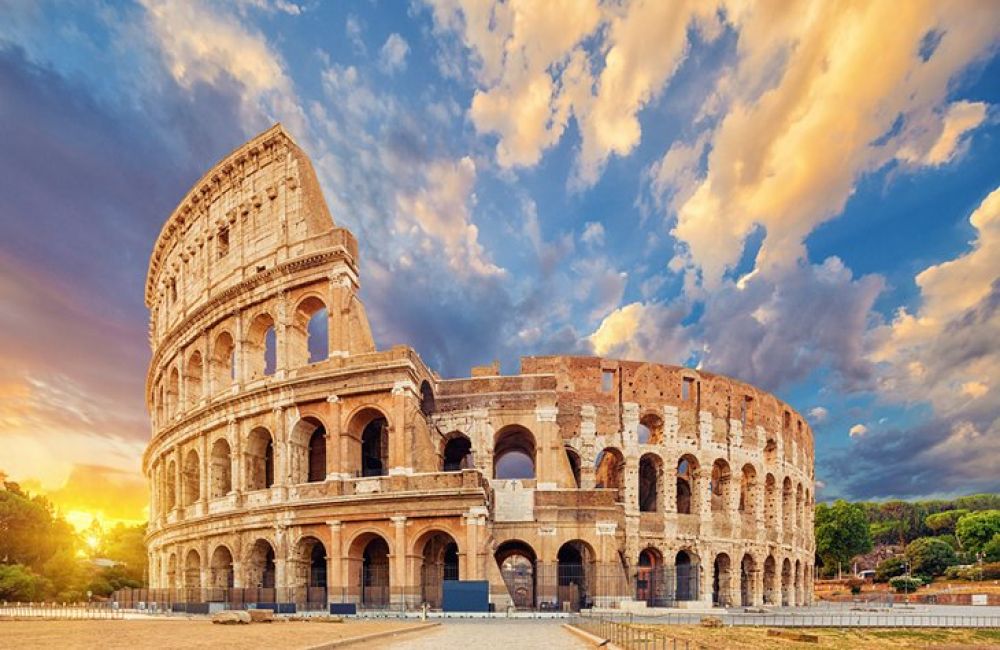

The Colosseum, known as the Flavian Amphitheatre, is an iconic symbol of the Eternal City, Rome, and a testament to the architectural ingenuity of ancient times. It was commissioned in AD 72 by Emperor Vespasian and completed in AD 80 by his son Titus, with further modifications made under Domitian. Designed to host gladiatorial contests, public spectacles, and theatrical productions, it could hold between 50,000 and 80,000 spectators, underscoring its role as a center for entertainment in Ancient Rome.
Although it had fallen into neglect with the decline of the Roman Empire, the Colosseum has always been a site of interest for travellers, particularly during the Renaissance when it was often included in the Grand Tour of Europe. This extensive tour was undertaken mainly by young European aristocrats of the 17th to the 19th centuries to complete their education. During this period, the Colosseum was celebrated for its grandeur and as a symbol of the mighty Roman Empire.
The 18th and 19th centuries saw a surge in cultural tourism as artists, writers, and poets drew inspiration from the ruin's grandiosity and its storied past. As archaeological endeavors increased, the Colosseum became more accessible and began to resemble the monumental ruin that we know today.
In the 20th and 21st centuries, the Colosseum has undergone numerous restorations and conservation efforts to ensure its survival and is now a dominant feature on the Rome tourism circuit. Recognized in 1980 as a UNESCO World Heritage Site, and later becoming one of the New Seven Wonders of the World in 2007, it has seen an exponential increase in tourism.
Latest Tourism Trends
Despite being an enduring symbol of Rome’s extensive history, the Colosseum faces challenges such as overcrowding, pollution, and the need for constant maintenance. However, with smart tourism initiatives and preservation technologies, the future of tourism at the Colosseum looks promising, aiming to balance both public interest and the conservation of history.